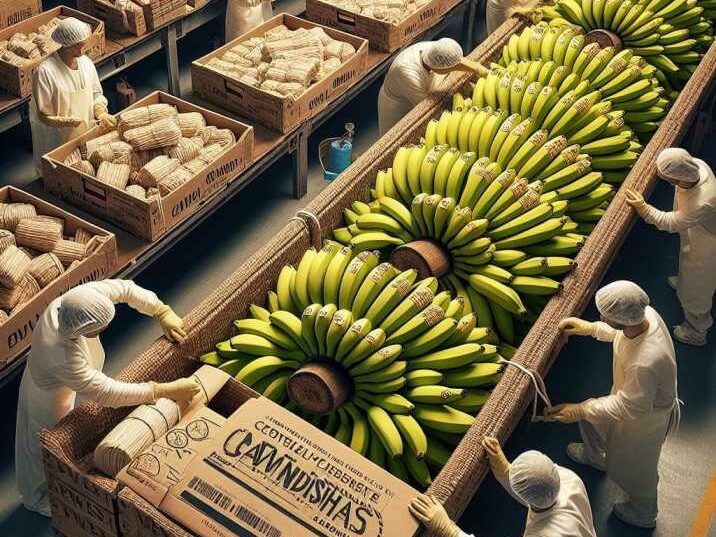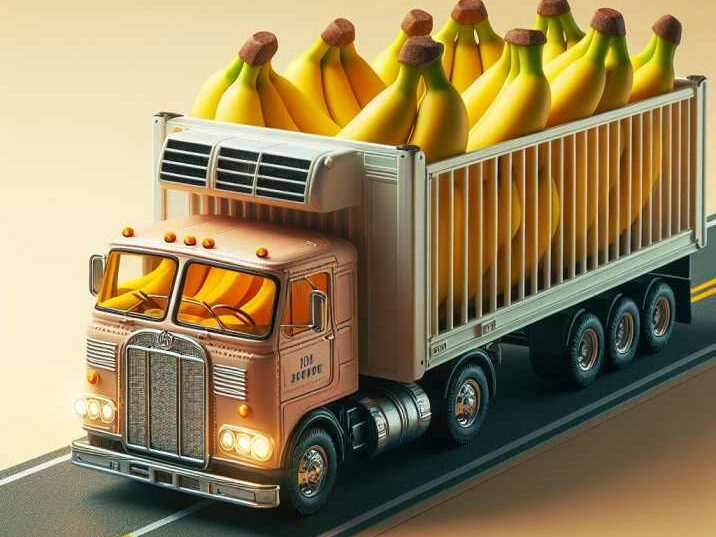Introduction:
Table of Contents
Cavendish bananas are among the most popular fruits worldwide, loved for their sweet taste and versatility. Have you ever wondered how these delicious bananas make their way from the farms to your local grocery store? The journey involves careful a process of packaging and transporting Cavendish bananas to ensure they arrive fresh and ready for consumption. In this guide, we’ll delve into the fascinating process of how Cavendish bananas are packaged and transported for distribution.
Packaging Process:
Cavendish bananas undergo a meticulous packaging process to protect them from damage and maintain their quality during transportation.
- Selection: Before packaging, bananas are carefully inspected to ensure they meet quality standards. Only the best-quality bananas are chosen for packaging.
- Bunching: Bananas are grouped into clusters, known as “hands,” which typically contain around 10 to 20 bananas each.
- Wrapping: Once grouped, the hands are wrapped in protective materials, such as plastic film or foam sleeves. This wrapping helps prevent bruising and damage during handling and transportation.
- Labeling: Each wrapped bunch is labeled with important information, including the type of banana, origin, and any relevant certifications, such as organic or fair trade.
- Packaging in Cartons: The wrapped banana bunches are then carefully packed into sturdy cardboard cartons. These cartons are designed to withstand the rigors of transportation while keeping the bananas safe and secure.

Transportation Process:
After being carefully packaged, Cavendish bananas are transported using various methods to ensure they reach their destination in optimal condition.
- Refrigeration: To maintain freshness, bananas are transported in refrigerated trucks or shipping containers. The temperature is carefully regulated to prevent premature ripening and spoilage.
- Air Transport: For long-distance shipments, bananas may be transported by air to expedite delivery. Air transportation reduces transit time, minimizing the risk of spoilage.
- Sea Transport: In some cases, bananas are transported by sea in specialized refrigerated containers. This method is often used for international shipments, as it allows for large quantities of bananas to be transported efficiently.
- Quality Control: Throughout the transportation process, quality control measures are in place to ensure that bananas remain fresh and undamaged. Inspections may be conducted at various checkpoints to monitor the condition of the fruit.

Table of Information Process of Packaging and Transporting Cavendish Bananas:
| Packaging Process | Transportation Process |
|---|---|
| Selection of bananas | Refrigeration in trucks or shipping containers |
| Bunching into clusters (hands) | Air transport for long-distance shipments |
| Wrapping with protective materials | Sea transport in refrigerated containers |
| Labeling with important information | Quality control measures during transportation |
| Packaging in sturdy cardboard cartons |
Conclusion:
The journey of Cavendish bananas from farm to store involves a complex yet carefully orchestrated process of packaging and transportation. By employing meticulous techniques and quality control measures, producers ensure that these beloved fruits arrive at their destination fresh and ready for consumption. Next time you enjoy a delicious Cavendish banana, you can appreciate the journey it took to reach your plate.
FAQs:
- Q: Are Cavendish bananas organic? A: While some Cavendish bananas are grown using organic methods, not all of them are certified organic. It’s essential to check the packaging for organic certification if you prefer organic bananas.
- Q: How long do Cavendish bananas last during transportation? A: With proper refrigeration and handling, Cavendish bananas can last several weeks during transportation without significant deterioration in quality.
- Q: Can Cavendish bananas be shipped internationally? A: Yes, Cavendish bananas are commonly shipped internationally, often via sea transport in refrigerated containers to maintain freshness.
- Q: Why are Cavendish bananas wrapped in plastic or foam sleeves? A: Wrapping Cavendish bananas in protective materials helps prevent bruising and damage during handling and transportation, ensuring they arrive in optimal condition.
- Q: How do I know if Cavendish bananas are ripe and ready to eat? A: Cavendish bananas are typically ripe when their skin turns yellow and develops small brown speckles. They should yield slightly to gentle pressure when ripe and are ready to eat.
